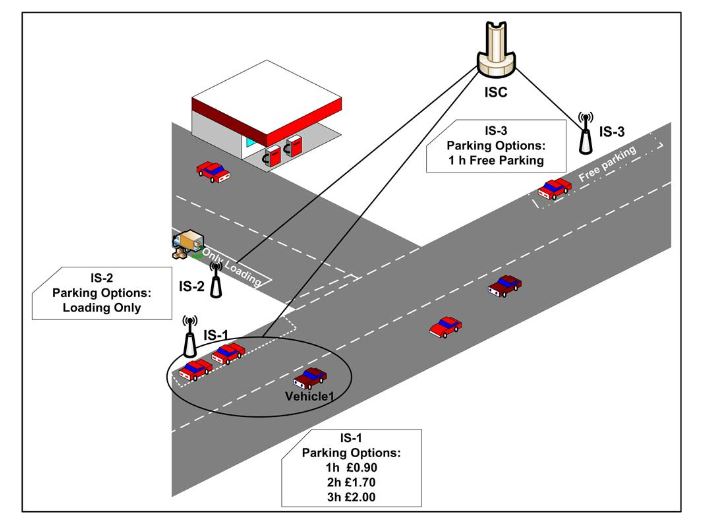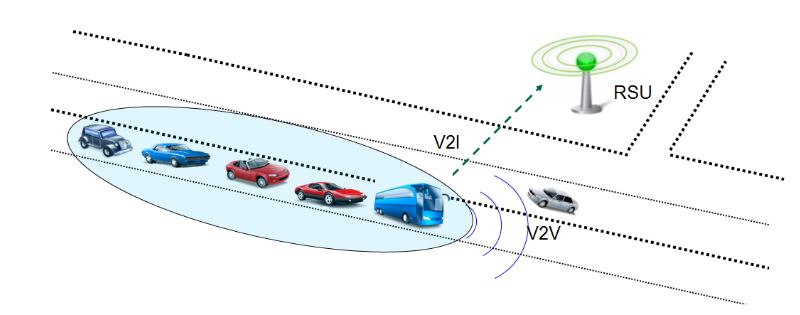ABSTRACT
Digital devices are becoming increasingly ubiquitous and interconnected. Their evolution to intelligent parts of a digital ecosystem creates novel applications with so far unresolved security issues. A particular example is a vehicle. As vehicles evolve from simple means of transportation to smart entities with new sensing and communication capabilities, they become active members of a smart city. The Internet of Vehicles (IoV) consists of vehicles that communicate with each other and with public networks through V2V (vehicle-to-vehicle), V2I (vehicle-to-infrastructure) and V2P (vehicle-to-pedestrian) interactions, which enables both the collection and the real-time sharing of critical information about the condition on the road network.
The Social Internet of Things (SIoT) introduces social relationships among objects, creating a social network where the participants are not humans, but intelligent objects. In this article, we explore the concept of the Social Internet of Vehicles (SIoV), a network that enables social interactions both among vehicles and among drivers. We discuss technologies and components of the SIoV, possible applications and issues of security, privacy and trust that are likely to arise.
SIOV TECHNOLOGIES AND COMPONENTS: NEXT GENERATION OF VEHICLES
The design, development and deployment of vehicular networks is boosted by recent advances in context-aware technology and wireless vehicular communication techniques, such as dedicated short-range communications (DSRC), Long-Term Evolution (LTE), IEEE 802.11p and Worldwide Interoperability for Microwave Access (WiMax). An increasing number of social network applications is being proposed for vehicular networks, which leads to a shift from traditional vehicular networks toward SIoV. In this section, we briefly introduce the key aspects that enable SIoV in current vehicular networks.
VEHICLE CONTEXT-AWARENESS

Figure 1. On-street parking system scenario
Several context-aware systems and frameworks for the SIoV have been proposed in the literature. Hu et al. Presented s-frame, a framework for social vehicular networks formed by in-vehicle or mobile equipment used by passengers, vulnerable road users and drivers that supports high-level context-aware applications. Alhammad et al designed a VANET on-street context-aware smart parking assisting system, deploying the concept of the centralized InfoStation to locate and reserve a parking slot. This reservation process is dictated by the driver’s preferences. All parking zones have a dedicated InfoStation that acts as a terminal, providing wireless coverage over DSRC, as shown in Figure 1.
SOCIAL NETWORK ANALYSIS IN SIOVs

Figure 4. A platoon of vehicles
A special category of clusters is platoons. Platooning describes the automated coupling of vehicles by electronic means, with the first vehicle taking control. The lead vehicle decides the speed with which the platoon will move, while the remaining vehicles regulate their speed to follow automatically. The advantages of this scheme are higher security and improved use of resources. Large transport vehicles naturally have a high air resistance, which can be reduced through slipstream effects within a platoon.
This saves fuel and helps to make better use of road space. A platoon can consist of an arbitrary number of vehicles, and as vehicles become members of the platoon, they can also form a social network on the fly. After the creation of the platoon, the leading vehicles can serve as the cluster head and take over most of the communications between the platoon and the outer network (see Figure 4).
SIOV SECURITY ISSUES
The security of a vehicular network is a vital aspect of an SIoV, as the compromise of a vehicle can lead to life-threatening situations, as well as a general degradation of other components that use the SIoV as part of a wider smart city infrastructure. Different from a standard computer network, a vehicular network provides a large number of distributed and heterogeneous resources and computational functionalities. The connectivity between vehicles in various geographic locations makes security a more complicated issue to solve, as is the heterogeneous nature in terms of ownership, manufacturer and, indeed, users. Social vehicular network security considers social characteristics and human behaviour alike. This section reviews issues of security, trust and reputation in vehicular networks with a particular focus on the social aspects.
SIOV PRIVACY ISSUES
The SIoV enables social interactions among vehicles and drivers and thus incorporates features of both vehicular networks and social networks. Both types of networks raise important privacy issues that need to be considered in the context of the SIoV. In this section, we review these privacy issues, discuss privacy-enhancing technologies for the SIoV and highlight research questions that need to be addressed to make SIoVs viable.
CONCLUSIONS
In this article, we surveyed the key concepts of the Social Internet of Vehicles (SIoV), a new type of network that enables social interactions between vehicles, drivers and passengers in the Internet of Vehicles. More specifically, we reviewed enabling technologies and key components of the SIoV and presented context-aware SIoV applications that can be deployed in a smart city. Three main components were introduced that include next-generation vehicles, vehicle context-awareness and SIoV context-awareness applications. Context-aware systems allow vehicles to adapt their behaviour as per the contextual information gathered from different subsystems, such as sensing, reasoning and acting.
Several context-aware frameworks are available that support high-level context-aware applications design. Future work should enhance the context-aware systems by adapting existing frameworks and incorporating context-aware applications from different vendors. We also identified the types of interactions that can happen between vehicles, drivers and passengers and discussed how social network analysis methods can be used to improve the operation of an SIoV. Using historical data of drivers, vehicles that are moving in a road network can be ranked in terms of their social behaviour. Ranking of vehicles can be used in order to perform efficient message dissemination by selecting the nodes that follow populated roads, so as to alleviate the broadcast storm problem. In order to cope with the interference caused by flooding of messages, clustering of vehicles can also be used, where the social characteristics of the drivers can help in the creation of more stable and robust clustering formations.
Combined communication capabilities along with social behaviour of the vehicles can facilitate eco-routing and dynamic charging of electric vehicles. Established social metrics, like degree or betweenness centrality, finally, can be modified in order to cope with the dynamic environment of a vehicular network and provide efficient tools for facilitating the communication among the nodes. Future work should focus on the development of new social metrics that can be dynamic and also able to rank in an efficient manner different entities that co-exist in an SIoV; smart vehicles, passengers, road users and drivers.
Source: De Montfort University
Authors: Leandros A. Maglaras | Ali H. Al-bayatti | Ying He | Isabel Wagner | Helge Janicke
>> IoT Environmental Monitoring System for Smart Cities Projects for Students